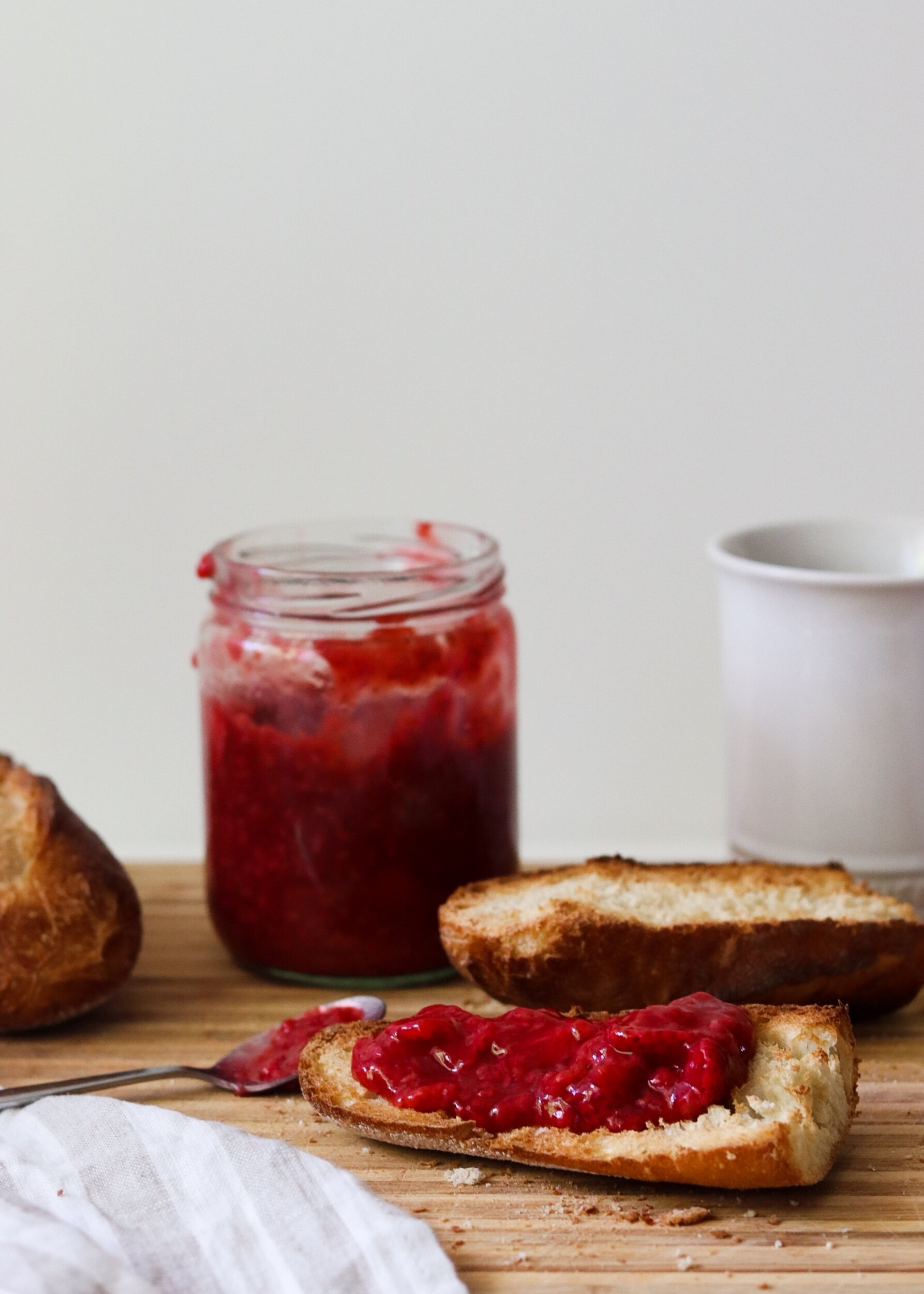
Are you looking for a delightful and healthy spread to elevate your brunch or lunch? Look no further than this homemade strawberry preserves recipe. Bursting with the goodness of fresh strawberries, this preserve is easy to make and can be enjoyed guilt-free. In this blog post, I’ll walk you through the process of making your very own homemade strawberry preserves.
I originally posted this recipe for this Healthy Strawberry Spread last summer and it quickly became one of the top posts on my blog. This is the perfect way to use up your berries during strawberry season, especially when you buy them in the last days of their freshness. You do not want to let those beauties go to waste, so this is a great way to use them all up.
Suggested: How to Keep Strawberries Fresher for Longer
Why We Love Homemade Strawberry Preserves
This is such an easy recipe, using just a few staple pantry ingredients. Maple syrup is used as a sweetener, so no cups upon cups of sugar are used in this recipe. This spread is also quite versatile, so you can use pretty much whatever berries you have on hand. You can use only strawberries or only raspberries, or a mixture of both.
Preserves vs Jam
Preserves and homemade jam are both delicious spreads made from fruits and sugar, but they have slight differences in their texture and the way they are prepared. Let’s explore the characteristics of each:
Preserves
Preserves are made by cooking whole or large pieces of fruit in a sugar syrup until they become tender and translucent. The fruit is gently cooked to preserve its shape and texture, resulting in a spread with visible chunks or whole pieces of fruit in thick syrup. Preserves tend to have a slightly firmer texture compared to jam.
Jam
Jam is made by crushing or pureeing fresh fruits and cooking it with sugar until it reaches a thick, spreadable consistency. Unlike preserves, the fruit in homemade strawberry jam is typically mashed or blended, resulting in a smoother texture. Store-bought jams have a more uniform appearance, with the fruit pieces evenly distributed throughout the spread.
What’s the Difference Between Jam and Preserves
The main differences between preserves and jam lie in the fruit texture and appearance. Preserves maintain larger fruit pieces or even whole fruit, while jam has a smoother consistency. The choice between preserves and jam often comes down to personal preference and the desired texture of the spread.
Both preserves and jam can be made with various fruits, including strawberries, raspberries, peaches, or apricots. The cooking process for both typically involves heating the fruit and sugar mixture over medium heat until it thickens and reaches the desired consistency. Lemon juice is often added to both preserves and jam as a natural acid to help with the setting process and to enhance the flavour.
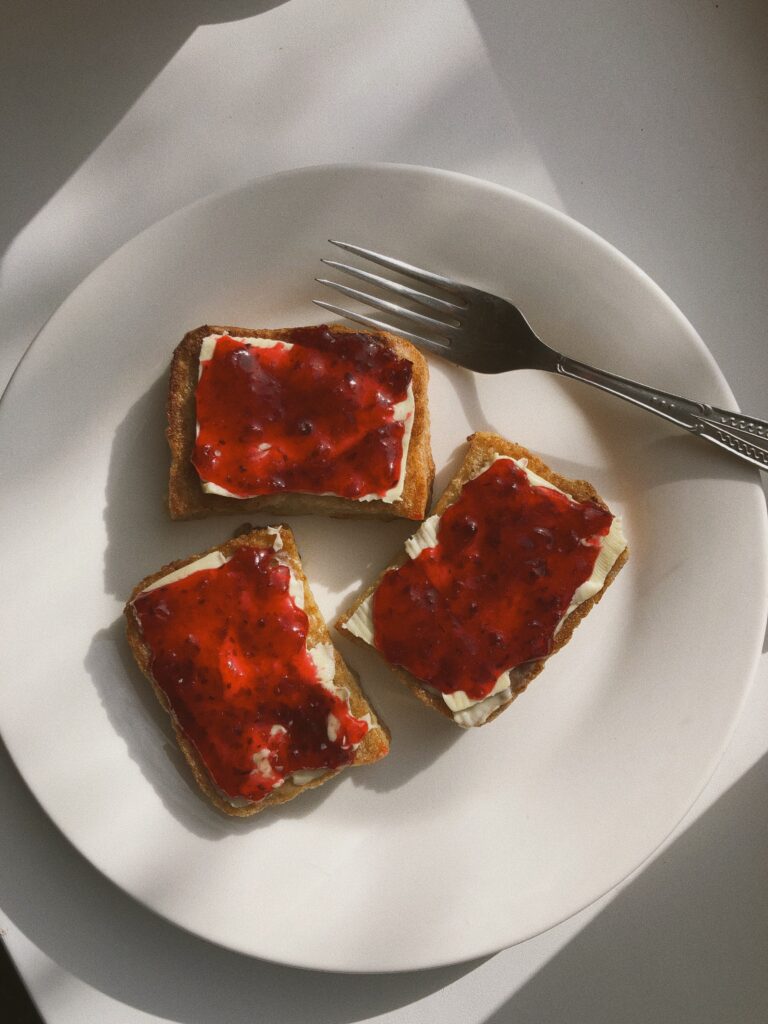
How to Use Strawberry Preserves
This Easy Homemade Strawberry Preserves recipe are a versatile and delicious ingredient that can be used in a variety of ways to enhance your meals and treats. Here are some delicious recipes ideas on how to use strawberry preserves:
- Spread on Toast or Bread: The most classic and simple way to enjoy strawberry preserves is to spread it on a slice of toast or fresh bread. The sweet and fruity flavour pairs perfectly with the warm, toasty bread for a delightful breakfast or snack.
- PB&J Sandwich: Take your peanut butter and jelly sandwich to the next level by substituting the jelly with strawberry preserves. The combination of creamy peanut butter and sweet strawberry preserves creates a delicious twist on this timeless favourite.
- Swirl in Yogurt or Oatmeal: Stir a spoonful of cold preserves into your plain yogurt or oatmeal to add a burst of flavour. It creates a delightful contrast of textures and tastes, making your breakfast or snack more enjoyable.
- Filling for Pastries or Tarts: Use strawberry preserves as a filling for pastries such as thumbprint cookies, turnovers, or phyllo tarts. Spoon a dollop of preserves into the center of the pastry before baking, and it will create a luscious fruity center that complements the buttery pastry.
- Topping for Pancakes or Waffles: Instead of traditional syrup, top your pancakes or waffles with strawberry preserves. The sweetness and tanginess of the preserves add a fresh and fruity twist to your breakfast.
- Drizzle over Ice Cream: Warm up the strawberry preserves slightly and drizzle it over your favourite ice cream flavour. The combination of cold, creamy ice cream and warm, sweet preserves creates a delicious dessert treat.
- Filling for Layer Cakes: Spread a layer of strawberry preserves between cake layers when assembling a layer cake, just like this Lemon Strawberry Jam Cake from In Bloom Bakery. It adds a burst of flavour and moisture to each slice, making the cake even more decadent and delicious and compliments the lemon zest.
- Accompaniment to Cheese: Pair strawberry preserves with cheese for a delightful combination of sweet and savoury. Serve it alongside a cheese platter or spread it on crackers with soft or mild cheeses like brie or goat cheese.
- Glaze for Meat: Mix strawberry preserves with a bit of balsamic vinegar and use it as a glaze for roasted or grilled meats. The sweet and tangy flavours add depth and richness to the dish.
- Flavour Enhancer in Sauces: Add a spoonful of strawberry preserves to barbecue sauce, marinades, or salad dressings to add a hint of fruity sweetness and complexity to the flavours.
With these creative ideas, you can make the most out of your strawberry preserves and enjoy their delicious taste in various dishes and treats. Let your imagination run wild and discover new ways to incorporate this versatile ingredient into your culinary creations.
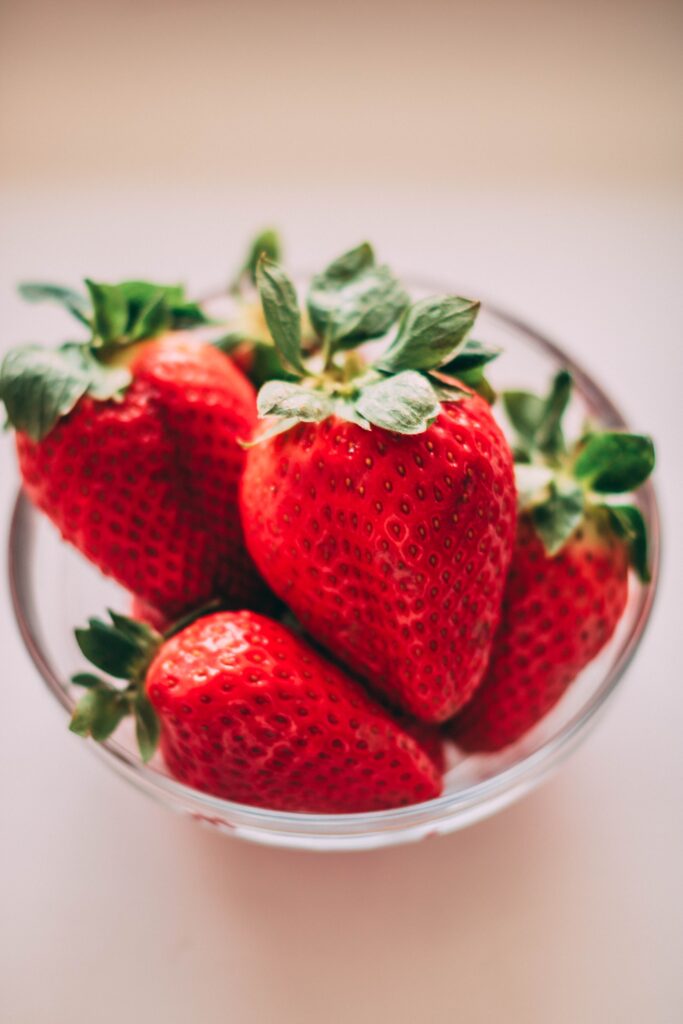
Ingredients for Strawberry Preserves
- 2 cups strawberries, chopped
- 1/2 cup of sugar-free apple juice
- 2 tbsp of cornstarch
- 2 tbsp of maple syrup
How to Make Homemade Preserves
- In a large saucepan, combine the chopped strawberries, apple juice, and maple syrup. Mix well and let it sit for about 10 minutes to allow the strawberries to release their natural juices.
- Place the saucepan over medium high heat and bring the mixture to a gentle simmer and add in the cornstarch. Stir occasionally to dissolve the cornstarch and prevent the mixture from sticking to the bottom.
- As the mixture heats up, it will begin to thicken. Bring to a boil then reduce to low heat to simmer for 15 minutes.
- Remove the saucepan from heat and you are ready to can if you wish.
How to Store Preserves: Canning
Once your Strawberry Spread has cooled slightly, you can now prepare to can your spread for longer shelf life. There are the simple instructions to can:
- First step, sterilize your canning jars and lids in boiling water or wash jars through a dishwasher cycle.
- Ladle the hot strawberry mixture into the sterilized jars, leaving about 1/4-inch headspace. Wipe the jar rims clean, place the lids on top, and screw on the bands until fingertip tight.
- Process the jars in a hot water bath canner or large pot for 10 minutes to ensure proper sealing. Make sure there is enough water that covers the jars by at least 1 inch and the water is at a full rolling boil.
- After processing, carefully remove the hot jars from the boiling-water bath with a jar lifter and let them cool on a kitchen towel. As they cool to room temperature, you may hear the satisfying “pop” sound of the lids sealing.
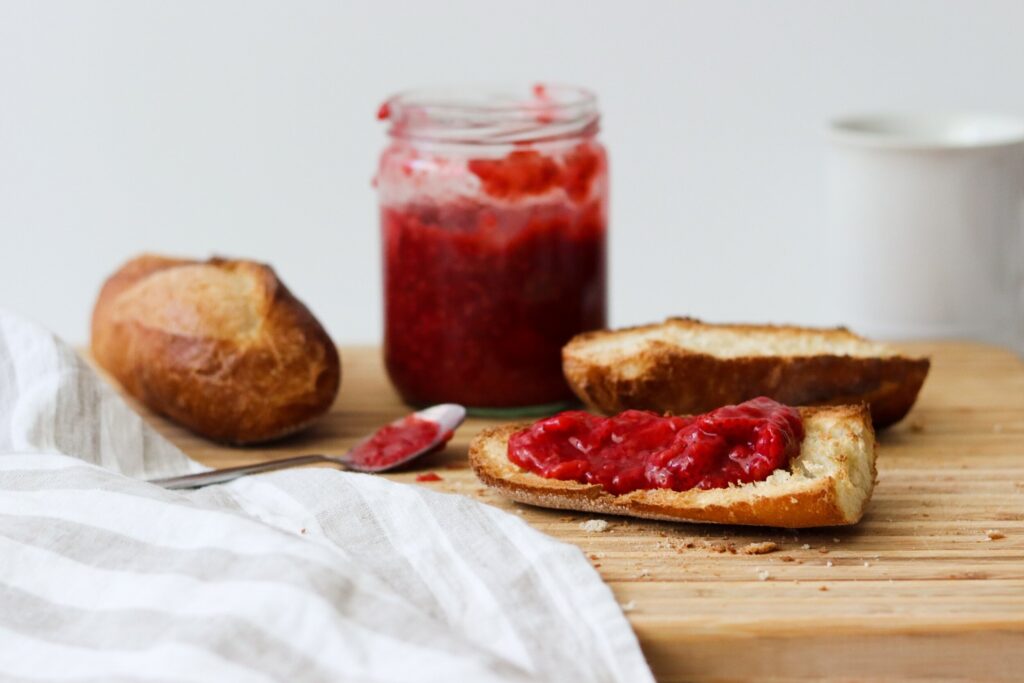
How To Store Preserves: Once Canned and Cooled
After the canning process, allow your hot sterilized jars to cool to room temperature. For best resutls, follow these steps to store them properly:
- Check the Seals: Once the glass jars have cooled, check the seals to ensure they are properly sealed. Press down on the center of the metal lid; if they are firm and do not flex, the filled jars are sealed correctly. If any jars did not seal properly, refrigerate them and consume them within a few weeks.
- Label and Date: Use labels or write directly on the jars to indicate the contents and the date of canning. This helps you keep track of freshness and use them in the proper order.
- Store in a Cool, Dark Place: Find a cool, dark place for long-term storage, such as a pantry or basement. Avoid areas with direct sunlight or excessive heat, as these can affect the quality of the preserves. The ideal temperature range for storing canned goods is between 50-70°F (10-21°C).
- Rotate and Consume: Preserves stored in a cool, dark place can last for up to one year. To ensure the best quality, it’s recommended to consume them within 6-12 months. Remember to rotate your stock, using the oldest preserves first.
- Refrigerate After Opening: Once you open a jar of homemade preserve, store it in the refrigerator to maintain freshness. The refrigerated preserves should be consumed within a few weeks.

Christopher is a food and lifestyle expert, recipe developer and the content creator behind May Eighty Five. With years of experience in the kitchen, he also shares tips, tricks and how to’s that he has learnt over the years. Every week, he shares quick, simple and mostly healthy recipes along with some home and entertaining tips. You will find flavorful cocktails, delicious appetizers, tasty mains and some indulgent desserts. As a home decor enthusiast, he also likes to share simple DIY projects and simple tips for a beautiful home.


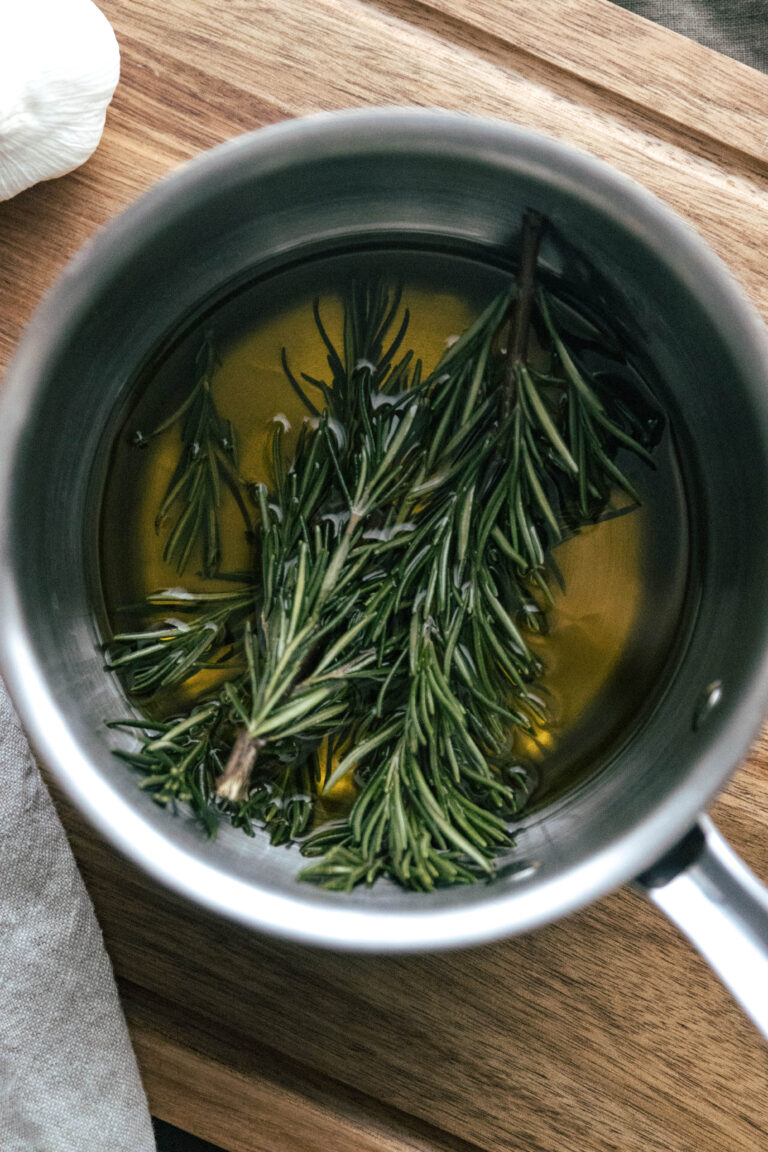
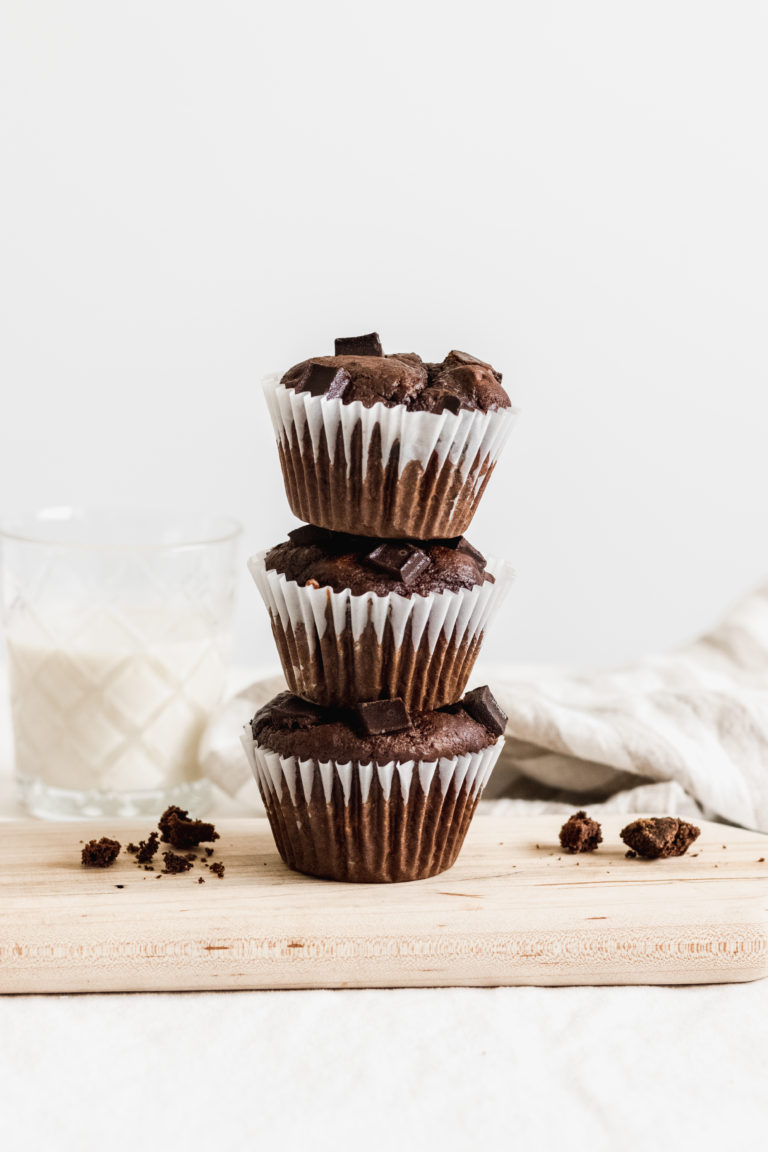
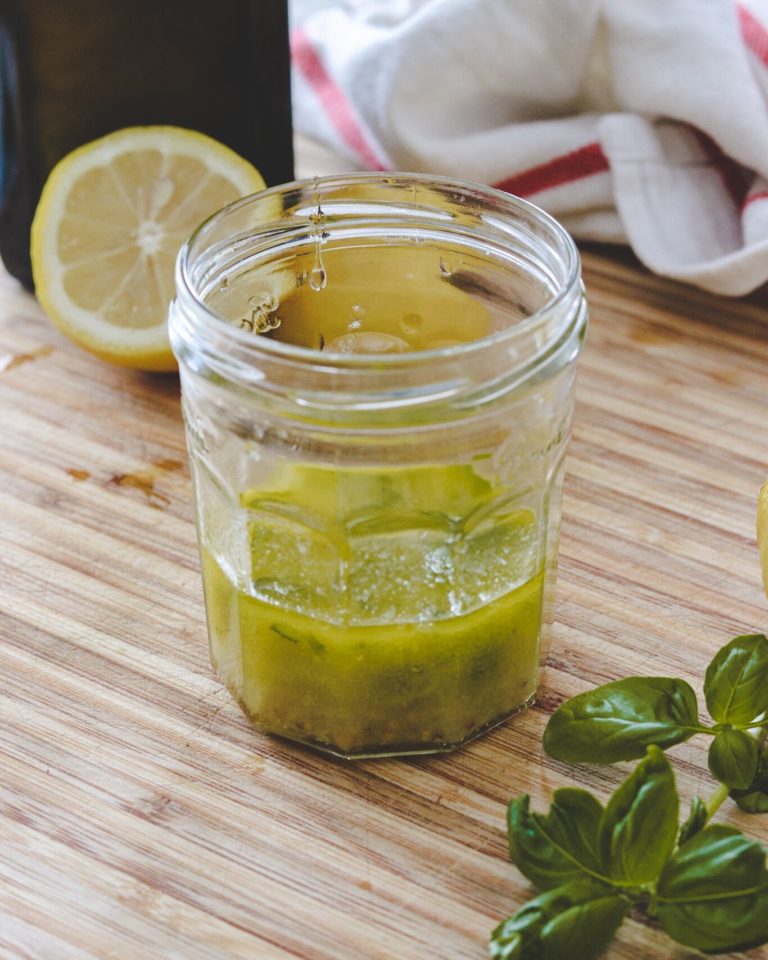
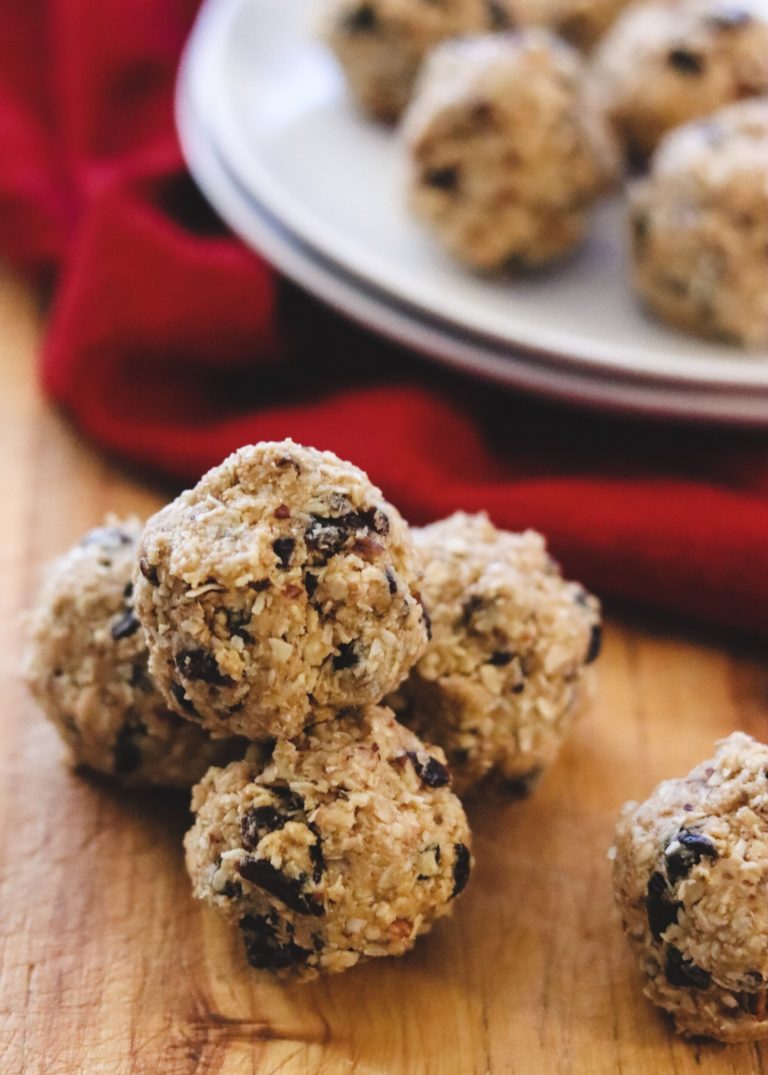
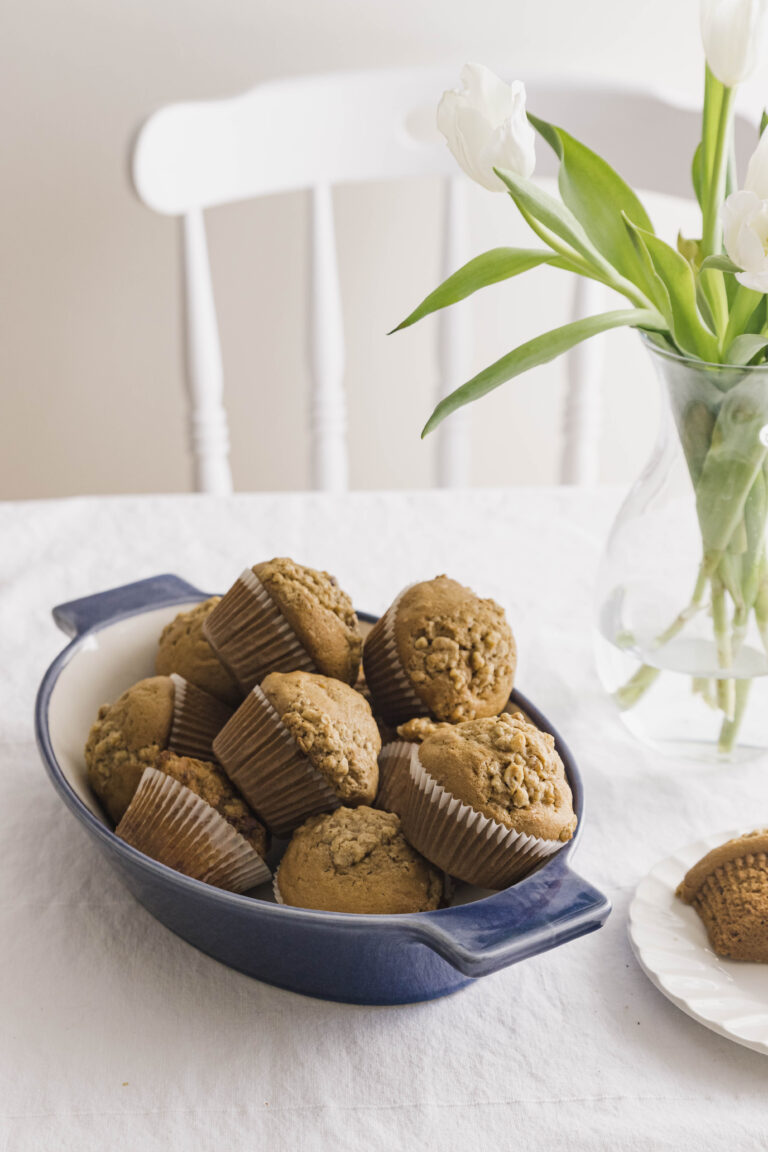
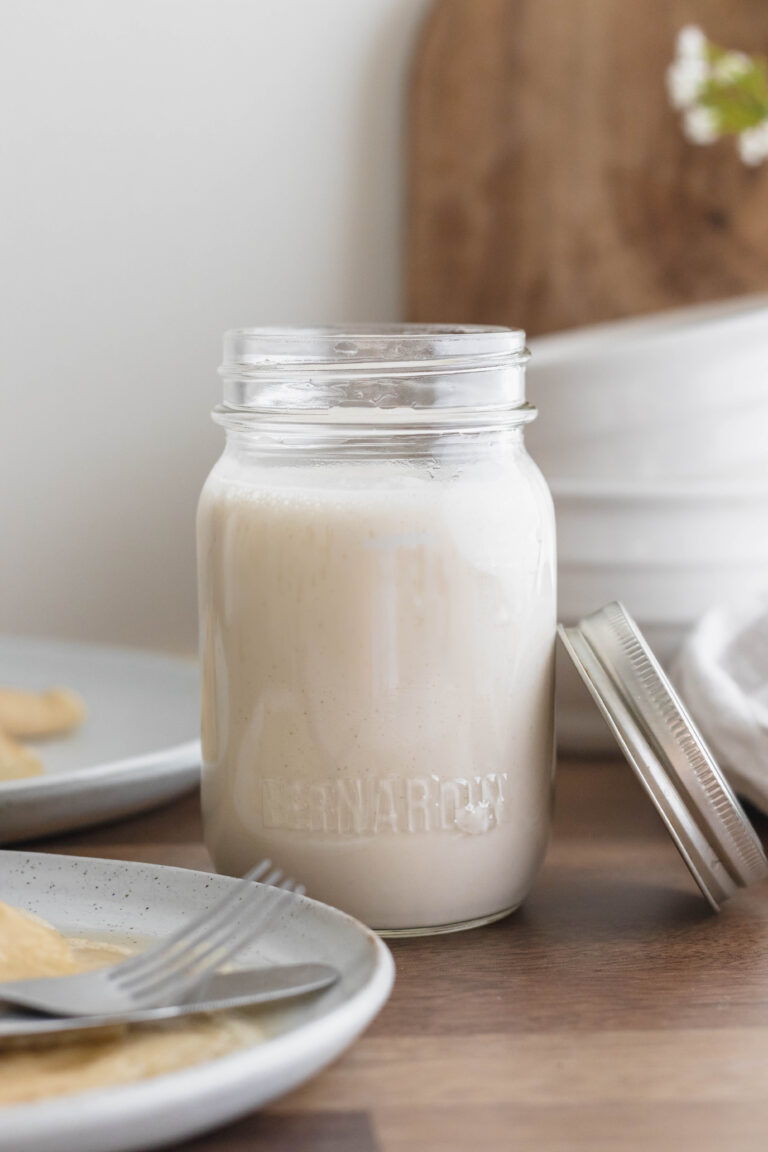
3 Comments